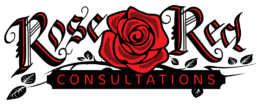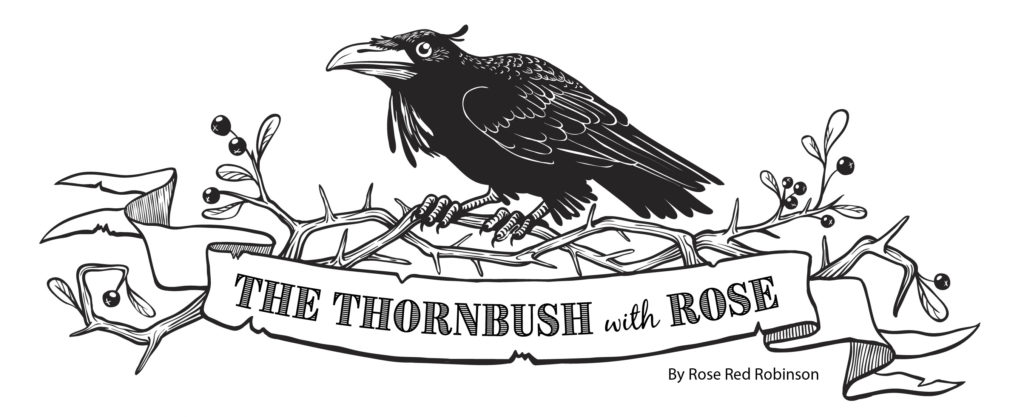This time in the Thornbush with Rose, we will discuss finding and joining communities.
“Wait! But I am a diviner and a solitary witch! What is this “community” you speak of? I loved that show but it ended years ago!”
But more seriously. We all have a need to compare ideas and the cross-pollination that comes from communion. We need validation that comes with sharing spaces and ideas with our fellow practitioners. I may practice my Craft alone most of the time, but I also often attend events, go to local gatherings, and plan online meet-ups and Zooms. 2020 and the COVID isolation made online gatherings the only way to stay in touch, and with the age of COVID isolation ending, the in-person kind of gatherings are starting up again. Now’s a perfect time to rediscover the art of meeting new people.
So how do we find those connections and community when we are solo practitioners or have been out of touch for a year or more?? How can we build connections if we are the only witch we know? Well… the internet is there for us my friends!
First it is good to research the areas you want to grow because that way you’re able to dig below the surface and find out where your particular interests may be. If you want to connect to other card reading folks? Look for card groups. If you want others who perform craftwork that you are drawn to, see what is out there for your flavor of craft. If there is a specific pantheon you are drawn to, look for groups that support that journey. Be specific in your search terms, and you’ll get specific results.
Next you can check out local “Pagan” groups and gatherings which may be appealing on the surface. Then do some deeper diving as you might learn more about what they actually practice and what they represent. Knowing more always helps form deeper connections (or avoiding communities that don’t actually align with your needs, values or interests). In areas with several overlapping communities, doing your homework on all of them will also inform you about how they interact, their histories together, as well as their effect on the community at large.
Once you decide on the type of group you might want to join, you have to reach out and apply to be part of the group. This is the hardest part: you have to take a chance and see if you fit in. Sometimes it will feel like coming home, other times it will feel like you are the proverbial red-headed step-sibling at first. Each group dynamic is different but you can find a good fit by being open and aware of what you can bring to the group, not just what you can get from the group. Be prepared for rejection, or what seems like rejection: getting a slow or delayed response. Remember that everyone’s coming out of their caves, dealing with the upheaval of change that comes after a year or more of being isolated.
Places online to start looking for new connections include MeetUp.com, Facebook Groups, Instagram, TikTok, and YouTube. There are also local and regional conventions (which also can often be found via advertisements on social media, but also local gathering spots like coffee houses and libraries). Each of these has its pluses and minuses. In-person gatherings are nice when you can find them (and with the age of COVID-19 isolation ending, these kinds of gatherings are starting up again). Online is nice as you can stay in your PJs if you want. Your comfort level is very valid. Are you an introvert or an extrovert? Maybe you are an ambivert like me; this means I like small gatherings, and sometimes I’m ready for large gatherings. Once you figure out what you can do it is time to hold your breath and jump in!
When I am trying to decide what groups to join after I have done my research and found a few groups that sound interesting to me, I will pull Tarot cards. Yep! I will pull cards to see if I can get an idea of what might be in store for me and is it something I can handle.
Here’s how I perform such a reading:
- Pick your favorite deck and shuffle it well.
- Cut the deck into two piles.
- Pull one card from each pile.
- The First Card represents The Event; What kind of experience can I expect or be on the lookout for at The Event. This, naturally, could be positive, negative, or something complicated and in between.
- The Second Card represents Yourself at The Event: What kind of energy will I encounter or need to make The Event work for myself?
- Pull additional cards as needed for clarity related to the two positions; What will I need to make this experience better for me and see where it goes? What hidden factors should I be aware of?
If the cards are complementy each other I generally see that as a positive. If they are not complementary, I will consider how much I want to go and what I can do to make the experience better. Is the cost to me, in terms of energy, effort, it and impact upon myself worth the experience? What can I look at to give myself the push I might need to try?
Example: I was interested in attending a new Pagan event that was happening online. I was nervous to attend as it was taking the place of an older event that had ended and I knew how much I loved that past event. I pulled out my Robin Wood deck and shuffled while thinking of all the wonderful possibilities this new event could bring. I cut the cards into two piles and pull the top card of each pile. The first card that represented The Event itself was The World. The second card that represented me at The Event was the 6 of Cups. Well, that sounds good, doesn’t it? Meeting many new folks from all over and sharing ideas with others. That was just what I was hoping for from this insightful reading. The event did go well and I am looking forward to the In-Person event the organization will be hosting in the Spring of 2022.
When you get challenging cards like the Tower for The Event, how can you view that? For myself, I look at it as a change that can happen if I let myself risk trying it out. Tower moments can be opportunities for growth or destruction of old beliefs. What one sees in the cards depends on one’s connection to the cards and the events in question. If you have an association for a specific card with your own history, pay attention! It’s appearance in such a reading is a warning signal!
Example: If I had gotten the Ten of Cups in that reading, I would have been more hesitant to attend. The Ten of Cups has a strong association for me with false hopes, and of hidden elements that may not be obvious at first glance. A friend of mine would see the danger in the Nine of Cups, due to their personal history with that card showing up in contexts involving addiction and addictive behaviors.
Pay attention to your card associations as they will inform you of your personal needs and requirements. No matter what, trust your gut.
Remember, look for groups that speak to your interests, do your research, and then try pulling cards when you are looking to expand your connections and explore new groups. You may be surprised what magic you can find if you let yourself try out that new group. You just may find your tribe.
This article was first seen in The Cartomancer in December 2021

